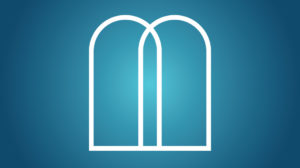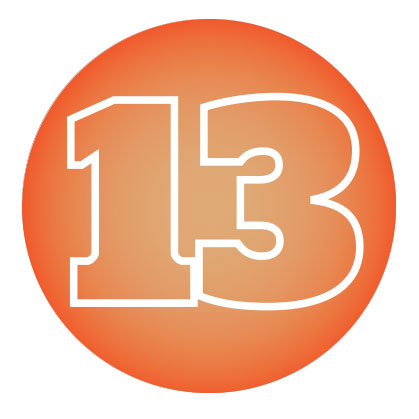Forever a Conduit

The ultimate goal of avodas Hashem is to eliminate bechirah, to reach the point where one no longer struggles with conflicted choices and is consistently faithful to Hashem’s will

“And your eyes shall behold your teachers” (Yeshaya 30). The teachers and sages of Klal Yisroel are our heroes, and as this dictum recommends, their pictures are prominently displayed in many Jewish homes. There are, however, no recorded images of Tanach personalities, and the Torah rarely comments on physical appearance. But the Torah does have something to say about Moshe Rabbeinu’s visage.
First, let’s establish what Moshe did not look like. Centuries ago, a famous artist misread a passage in the Bible and sculpted a statue depicting the Av haneviim, Master of all Prophets, with horns!
Rav Pincus tells of yet another artist and another fallacy. There’s a legend about a painter living during the time of Moshe Rabbeinu who was commissioned by a king to paint Moshe’s portrait. When he returned with the painting the wise men of the royal court claimed they could discern Moshe’s character by viewing the picture, and they concluded that he was a lowly, despicable person. According to the story, when Moshe Rabbeinu heard of their analysis, he confirmed that he’d been born with difficult character traits, but he’d worked on himself for many years to reach perfection.
Although the fabricators of this story may have meant well, aiming to enhance Moshe’s greatness by conceiving humble beginnings, Rav Yehoshua Leib Diskin rejects it as groundless folklore. As Rav Pincus puts it, the very thought that we should — or even could — embellish Moshe’s stature is as absurd as placing a giant on a step stool in order to make him taller!
Furthermore, he adds, Moshe’s greatness was apparent from the first day of his life. And she bore a son and saw that he was good (Shemos 2:2). Chazal say his birth “filled the house with light,” and that his mother, Yocheved, “gave birth to 600,000 children at once.”
Enough of artists and falsehoods. What does the Torah say about Moshe’s countenance? The light at his birth presaged a unique phenomenon that appeared later in his life: And it was when Moshe descended from the mountain…he did not know “ki karan ohr panav b’dabro ito,” that the skin of his face radiated because He [Hashem] had spoken to him…all of Yisroel saw Moshe…and behold the skin of his face shone, and they were afraid to approach him (Shemos 34).
Karan means “shone,” or “radiated.” (Ironically, it was the confusion of this term with another word — keren, horn — that influenced the artist’s rendition of Moshe centuries ago and spawned the myth of the horned Jews.) What was the nature of the karnei hod, the rays of glory that Moshe’s face emitted?
Light is a marker for spirituality. After forty days and nights of learning Torah with Hakadosh Boruch Hu, Moshe’s face reflected his spiritual stature, his proximity to the Shechinah, and the effect that Torah has upon those who study it.
Foundation of Prophecy
The seventh principle of the Rambam’s thirteen articles of faith states: I believe with complete faith that the prophecy of Moshe Rabbeinu was authentic, and that he was the father of all the prophets who preceded him and who followed him.
This principle, as the previous one that established the presence of nevuah, lays the groundwork for the next two principles which cover our belief in Torah. The very first words a young child is taught is “Torah tzivah lanu Moshe.” Moshe received the Torah from Hashem and transmitted it to us. If we are to believe in the divinity and immutability of the Torah, it’s essential that we believe in the authenticity of Moshe Rabbeinu’s prophecy and the integrity of his transmission.
The Rambam emphasizes that our belief in Moshe’s nevuah is incomparable to our belief in any other navi, because it’s sourced in a unique time and place. Although Moshe performed many signs and wonders, more so than any other navi (think: Ten Makkos, splitting of the sea, delivering the mon), these did not serve as absolute evidence of his prophetic powers, because a sceptic can always attribute miracles to sorcery. Instead, it was Matan Torah that established Moshe’s credibility in the eyes of the people. As Hashem assured Moshe, from that day onward, “they will believe in you forever” (Shemos 19:9).
How was such a reality possible? The only way to objectively substantiate the authority of a navi is to witness Hashem granting him that power. At Matan Torah, each of us experienced nevuah when we heard the Voice of Hashem pronounce the aseres hadibros. This demonstrated to us that prophecy is a genuine phenomenon. Then we heard Hashem invite Moshe into the cloud to hear the rest of the Torah. As the Rambam puts it, “he who personally witnesses an event doesn’t have to be convinced that it happened.” This is why our belief in Moshe’s nevuah is unshakable. Thus the promise: they will believe in you forever.
Oops! We could not locate your form.










